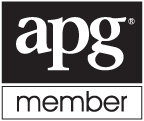Things to Look for When Researching Norwegian Birth Records
Hi, everyone! Did you have a great week? Did you find anything fun while searching for your ancestors? Are you wondering what your next step in your journey is? Are you burned out because the journey is taking too much of your energy? Do you love the hunt as much as I do?
This week on the Scandinavian Genealogy Hour, we will be taking a deeper look at birth records and what one finds on an original document. Remember each minister of each parish could possibly write their registries differently. Therefore, when we look at one record it doesn’t mean that the next record will be the same. We will have to learn that new record all over again. However, once we start knowing what information was included then the different arrangements will be easier to read.
Here’s Johanna’s birth record in full. Notice at the top left it states the year, 1893. Then it goes down each column with more detailed information. I went over these columns in my 21 Sept 2018 post so if you need a refresher, then go back to that one. By 1893, there was more of a set standard for how the registries were arranged. This one shows that the male (Mandkjön) children were listed first, then the female (Kvindekjön) children. In addition, if we see two dates, then one is the birth date and the other is the christening date. Luckily, on this record the children’s names are easy to read.
However, the next column with the parent’s names can be a bit tricky. The standard Scandinavian practice is to put the husband’s occupation, then his name, then his farm name. Sometimes, as in this case, the minister wrote both parents’ information down in the first column before writing their farm name in the next column. In this example, Husmand (Crofter) Johannes Kolbensen, Hustru (Wife) Gjertrud Sjursdatter, Stølsmark. In the next column it says the farm name Stølsmark.
The next two columns in this record state the parent’s birth years beginning with the father. Therefore, we now have a general idea of when they were born so we can identify the correct person when looking for other records.
The next column is about the witnesses of the birth. This is interesting because again it follows the pattern of occupation, name, and farm name. The ministers didn’t put all of this information in for every person because space was limited. That means we just have to learn how this particular minister wrote the witnesses down. This column is important because we’ll find family members and friends who lived in the areas surrounding the birth area. This can help grow the families on our family group sheets later on. Therefore, I would recommend taking the time to learn this column. For one of my ancestors, this column helped prove a relationship that wasn’t shown in more direct ways.
Let’s take a look at the witnesses column more closely.
In this example, the minister chose to write some occupations or titles, abbreviate other words, and squish other words into this small space. Therefore, it’s okay if we can’t figure out a word. All of this takes time to understand and that’s okay. My interpretations are still off on many records as well. I’m definitely still learning this language and people’s handwriting of it.
What helps me in deciphering farm names is going to FamilySearchWiki. If I know the place where this birth took place, then I go to that Wiki page. In this case, I went to the Vikedal Parish, Rogaland, Norway page. At the bottom, it lists all of the farms in the Vikedal parish. This is typical for every parish page. The farm names will be listed at the bottom.
Translation:
Farmer ?? Øvre
land, Farmer’s daughter M ??
Øvreland, ? Theresa Støls
mark, farmers daughter Valentin
Havda, farmer’s son K??
J. Stølsmark.
As you can see, I still need practice at reading handwriting. If anyone else can make it out, then go for it! I usually spend the bulk of my research deciphering handwriting because that’s where I need the most practice. The point I want to make here is the farm names Øvreland and Stølsmark are in the Vikedal Parish. These are actual farms or addresses for these people.
The farm name Havda is different. There is no Havda in Vikedal. The closest name is Havnen, which the writing doesn’t look like it matches. Therefore, I went back to FamilySearchWiki and typed in Havda, Norway in the search bar. The closest it came up with is Halsa in More and Romsland Parish. This is a possible match because people outside the parish were definitely witnesses. However, we’ve got to think of the nature of people. How far would someone travel to be a witness at a birth? It’s usually the next parish over, however More and Romsdal Parish is not the next parish. It’s actually three counties over from Vikedal Parish. This makes it more unlikely that Halsa is the correct farm name. Therefore, Havda is still an unknown to this day. It likely means that I translated it incorrectly and it really is Havnen in Vikedal Parish. It also means that I can take this record to other colleagues, friends, or family of mine that can help decipher these words. Researchers do that all the time!
These witnesses don’t appear to be family of Johannes Kolbensen because the names that I was able to decipher aren’t known family names. However, they do live in Stølsmark, which puts them in close proximity to the family. They may still be unknown cousins or just family friends. That’s another project for another day.
I hope this helped clear up what can be found on birth records. There’s a whole bunch more to learn from these records than just birth date and name. I hope you take the time to learn it because you can use it in almost every record found after this.
So good luck and let the blessings from your hard work flow!
Tiffany


